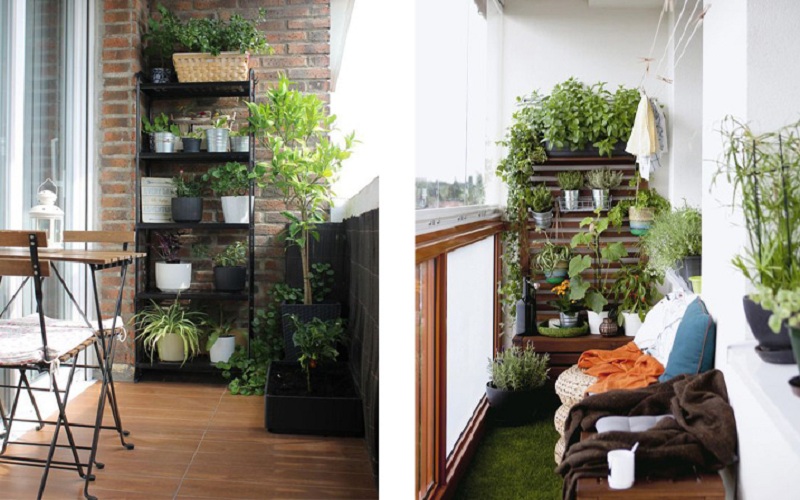The insulation of the facades of a building remains essential and makes it possible to obtain excellent results in terms of energy performance. However, the positive effects of a change of openings should not be underestimated, a fortiori within the framework of a global renovation, and, to a lesser extent, of the renovation of the balconies, which is not very obvious. Implementation tips.
PVC or aluminum for the openings?
With a few exceptions, the market for the renovation of openings is today very largely dominated by PVC and, to a lesser extent, by aluminium. Wood, which is more expensive balconies in condominiums and requires more maintenance, is rarely chosen.
In terms of insulation, PVC unquestionably scores points. Its heat transfer coefficient of 0.16 W/(m².°K) makes it as insulating a material as wood, which makes it particularly suitable for windows, bay windows and other openings.
Conversely, aluminum is a naturally conductive material. Its Lambda coefficient of 234 W/(m².°K) is even close to that of copper, a very conductive material if ever there was one.
A PVC window equipped with triple glazing thus makes it possible to obtain the Passivhaus label (passive houses), the highest degree of insulation certification. Which is strictly impossible for aluminum windows.
To limit the transfer of cold or heat, between the outside and the inside, the manufacturers therefore use thermal breaks, often made of PVC moreover; without achieving as much thermal insulation as with PVC windows.
On the sound insulation side, here again, PVC takes precedence over aluminium. With the same dimensions and characteristics of the double glazing, a difference of 1 decibel is frequently observed between the two materials.
Knowing that PVC is less expensive to buy (around 20 to 30%), what advantages can there be in choosing aluminium?
The latter is first of all much more solid. Its natural rigidity is thus particularly suitable for large glazed surfaces, in particular for three-rail sliding windows, allowing a wide two-thirds opening. But also to bay windows with brick partition, especially used in new buildings, where the slider disappears into the lining partition.
Another advantage of aluminum is the many possibilities it offers in terms of colors, including dark colours. Powder coating makes it possible to choose very precise colors, with finishes ranging from satin to sandblasted.
Aluminum thus offers great creativity, whereas a mass-tinted PVC will age badly by whitening and will even deform in the sun.
The addition of a thermo-plastic film on a PVC profile (or lamination) makes it possible to give, at lower cost, color both on the outside and on the inside. Imitation wood, anthracite grey, taupe grey… The possibilities are numerous. All with superior performance to gloss or satin aluminum lacquering, for which changes in color are often observed between five and eight years. The film contains, in fact, several anti-UV treated layers which guarantee a hold of at least ten years. Furthermore, the physico-chemical composition of the latter also prevents the rise in temperature of the profiles and their deformation. Indispensable with dark colored films or for a southern exposure.
Mixed joinery: a good compromise
For more solidity and/or darker colours, there is however a good compromise: mixed aluminium-PVC or aluminium-wood windows and sliding doors: on the outside, the aluminum part allows you to benefit from more original colors and better hold over time. While inside, PVC or wood offers reinforced insulation. All for a lower price than an all-aluminum window.
Some manufacturers offer sliding windows that combine PVC and fiberglass. A material known for its qualities of rigidity and inertia. Its thermal insulation coefficient thus remains 20 to 30% more efficient than an aluminum sliding door, with an average lower price of 10%. All with profile sections much thinner than those in all PVC. Please note that the use of aluminum is still necessary for glazed surfaces over 6 m².
The criteria to take into account when choosing the right openings
The choice of joinery and glazing must be made according to the exposure and the local climatic conditions, in particular to manage the solar and light contributions as well as possible:
The coefficient light transmission (TLw) thus indicates the ability of a joinery to transmit light. The higher it is, the better the array performs on this point. In any case, it should therefore be chosen as high as possible.
The thermal insulation coefficient (Uw)measures heat loss through a bay and therefore reflects its ability to retain heat. The lower the Uw coefficient, the more the joinery is insulating. In new buildings, the coefficients generally range from Uw = 1 W/ (m2.°K), very insulating, to Uw = 2 (poor performance). These figures should be put into perspective with the performance of single-glazed wood joinery from the 1980s, which achieved coefficients Uw = 5 W / (m2.°K). Or worse, anodized aluminum windows from the same era, without thermal breaks, which displayed a Uw of 8 W/ (m2.°K)!
Air permeability performanceis expressed by a ranking ranging from 1 to 4, in ascending order of performance. A window classified A*4 is therefore more airtight than an A*3 window. This performance depends on the general design: stiffness of the opening frames, quality and distribution of the hardware elements, gasket ensuring the seal and manufacturing quality.

